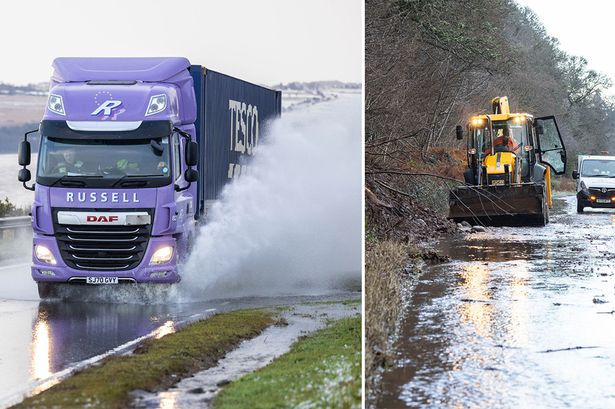The dawn of the New Year in North-West England was marked by a relentless deluge, the region finding itself at the epicenter of a widespread weather system sweeping across the United Kingdom. While the north-west bore the initial brunt, the Met Office issued widespread weather warnings encompassing large swathes of England, Wales, and Scotland, indicating the expansive nature of the incoming precipitation and the potential for disruption. Rivers, already swollen from previous rainfall, threatened to breach their banks, while the saturated ground increased the likelihood of surface water flooding, posing risks to homes, businesses, and transport infrastructure. The persistent and heavy rainfall prompted concerns about travel delays and cancellations, impacting those returning from holiday festivities or embarking on New Year’s Day outings. Emergency services braced themselves for a potential surge in calls related to flooding and weather-related incidents, urging residents to exercise caution and avoid unnecessary travel.
The specific regions covered by the Met Office warnings encompassed a significant portion of the country, extending from the north-western counties down through the Midlands and into parts of southern England. Wales experienced heavy rainfall across much of its territory, while Scotland faced the prospect of localized flooding in low-lying areas and near rivers. The severity of the warnings varied, with some areas subject to yellow warnings indicating the possibility of localized flooding and travel disruption, while others were placed under amber warnings, signifying a higher likelihood of severe weather impacts and potential danger to life. The widespread nature of the warnings highlighted the unusual intensity of the New Year’s Day weather system and the potential for widespread disruption.
The heavy and persistent rain across North-West England raised immediate concerns about flooding, particularly in areas with a history of riverine or surface water flooding. Communities along major rivers, such as the Mersey, Ribble, and Derwent, were particularly vulnerable as water levels rose rapidly. Local authorities and emergency services monitored the situation closely, prepared to deploy flood defenses and issue evacuation warnings if necessary. The already saturated ground exacerbated the risk of flooding, as it limited the ability of the soil to absorb further rainfall, leading to rapid runoff and surface water accumulation. This posed a significant threat to properties and businesses in low-lying areas, as well as to road networks and other critical infrastructure.
The impacts of the widespread rain extended beyond immediate flooding concerns. Transport networks across the affected regions faced significant disruptions. Road closures due to flooding and poor visibility were anticipated, leading to delays and cancellations for both road and rail travel. Airports also braced for potential disruptions, with the possibility of flight delays and cancellations due to adverse weather conditions. These disruptions posed significant challenges for those traveling during the holiday period, impacting both personal and business travel plans. The Met Office and transport authorities urged travelers to check for updates and travel advisories before embarking on their journeys, emphasizing the need for caution and preparedness.
Beyond the immediate impacts on transport and infrastructure, the heavy rainfall also raised longer-term concerns about the potential for environmental damage. The saturated ground increased the risk of landslides in hilly and mountainous areas, threatening properties and infrastructure. The heavy rainfall also carried pollutants into rivers and coastal waters, potentially harming aquatic ecosystems and impacting water quality. Furthermore, the prolonged wet weather could affect agricultural production, leading to crop damage and potential delays in planting and harvesting. These broader environmental impacts highlighted the wider consequences of extreme weather events and the need for long-term strategies to mitigate the effects of climate change.
The widespread rain and weather warnings across the UK on New Year’s Day underscored the increasing frequency and intensity of extreme weather events. While localized flooding and travel disruptions are not uncommon during the winter months, the scale and severity of this particular weather system highlighted the growing challenges posed by climate change. The Met Office and other meteorological agencies continue to emphasize the importance of preparedness and adaptation in the face of these changing weather patterns. This includes investing in flood defenses, improving early warning systems, and promoting public awareness of the risks associated with extreme weather. The New Year’s Day rain served as a stark reminder of the need for a collective effort to address the challenges posed by climate change and to build more resilient communities.














